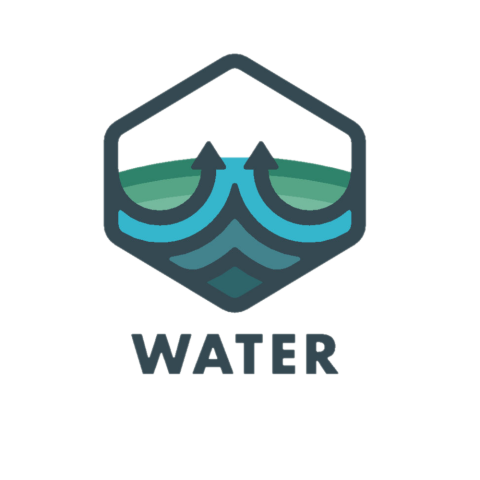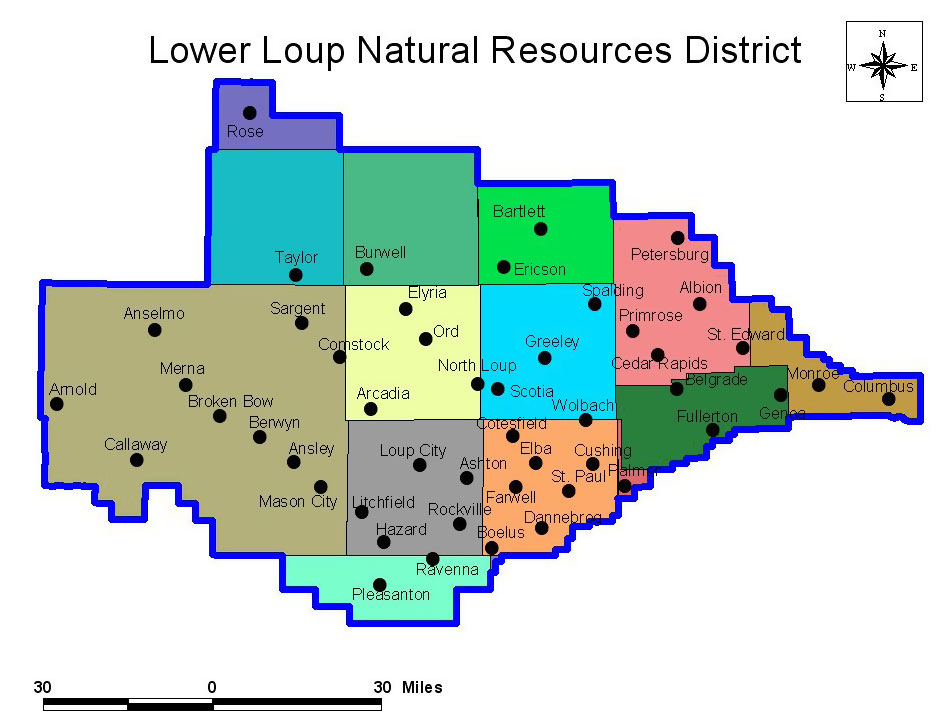The Lower Loup Natural Resources District’s goal for wellhead protection is to assist the 40 cities and villages within the District boundaries with the development of Wellhead Protection programs.
The Nebraska Department of Environmental Quality provides oversight for wellhead protection statewide. The agency also has an EPA mandate to develop Wellhead Protection Area maps.
Wellhead Protection area boundaries have been mapped for all the cities and villages in the Lower Loup NRD.
Wellhead Protection plans include:
- A detailed inventory of potential contaminants
The inventory is the information base for knowing the "what, when, and how" for any potential contaminant that might enter a public water system.
- A listing of contaminants registered with the state
This listing is maintained by the Department of Environmental Quality. It involves the number and classification of injection wells and the listing under SARA Title III and NPDES permits.
- A listing of all underground storage tanks registered with the State Fire Marshal
The State Fire Marshall issues permits for all buried and above-ground flammable fuel storage tanks.
- A condition assessment of the drinking water supply
The Nebraska Department of Health and Human Service System (NDHHSS) has administrative, technical, and regulatory oversight for all public drinking water systems. NDHHSS regulates through authority found in Title 179-Public Water Systems.
- A review of existing local ordinances that impact water quality
Local ordinances and zoning regulations provide grass-roots protection for community drinking water supplies not available from state and federal sources.
- A report on the present quality and availability of future quantity concerns
The public needs to be aware that the water delivery agency continually strives to provide a clean, high quality product. Likewise, local and state officials need to be alert to the ever-changing danger of new contaminant sources.
- A summary of existing and future security needs
The public needs to be aware that and comfortable with the fact that the drinking water they consume is protected from human contamination and natural disaster.
- An assessment of future well sites
Contingency plans should provide for drinking water sources in the event of emergencies and are an important component of any plan.
- A review of emergency procedures and contingencies
Determinations should be made as to who operates the public water system in the absence of primary staff and as to the availability of potable drinking water during
times of emergency are of prime concern.


